Only a picture can be worth a thousand words. And there is a good reason for that. Visual images in digital marketing play an important role in ranking high in searches, getting shared on social media, keeping your visitors’ attention, and turning visitors into leads. Digital marketing images can also create a strong connection between your branding and your product. With good use of marketing visuals, these things are highly possible. In addition, it is a powerful tool that enables you to get closer to your customers/ readers. Let’s get started with the types of visual marketing content.

Types of Visual Marketing Content
The most common options for digital marketing visuals are as follows:
- Images and Custom Illustrations
- Videos
- Infographics
Images and Custom Illustrations
Images are the first visual element that attracts people’s attention. But why is that so? Visuals are processed by our brains more quickly than text. It will take some time before you read the material to fully understand its meaning. Therefore, you can quickly comprehend information when you see an image for digital marketing or custom illustrations.
Videos
It is obviously better to watch a video rather than read a text to understand the concept and rank high in traffic. Videos may explain the most complex subjects and display products. Researches also show that live streaming videos generate ten times more engagement than regular videos. You can also repurpose blog posts into videos so that there is no need to read the whole material.
Infographics
They are graphic visuals that present any kind of information. They include a variety of visual content, such as histograms, charts, and flowcharts. According to marketers, infographics are the most effective way to deliver information. They need to be simple and easy to understand because an infographic that is too complex with content and data becomes difficult to read.
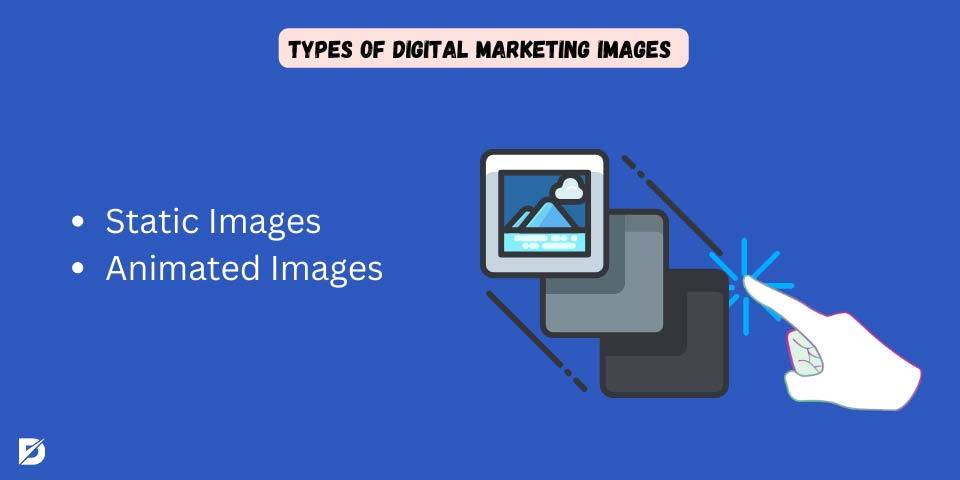
Types of Digital Marketing Images
Digital marketing image types can be divided into static and animated.
- Static Images
- Animated Images
Static Images
The most basic type of digital marketing images is the static one. With any image editing program, these can be made. It contains infographics, product images, and quote graphics. Posts that don’t need a lot of user engagement work well with static images. A static image is a good option, for instance, if you want to publish a picture of your product or a comment from a happy customer.
Animated Images
The second type of digital marketing images is animated images. They can be either animated GIFs or cinemagraphs. A kind of image that consists of many moving images is called an animated GIF. They are frequently used to give a social media message. With the help of online tools like Photoshop, anyone can make them. You must first decide on the series of images you wish to include in the animated GIF. Thus, you can give some personality to your visual marketing. Cinemagraphs are similar to animated GIFs. The difference between them is that cinemagraphs usually have one moving element. They can be created by using online tools such as Photoshop or Flixel. You should first make a video file with the elements you want to be moving in order to create them.
The next step is to use the video file to make a still image. Applying a mask to the still image is the final step to make sure that only the part you want to move is visible.
Where to Use Images in Digital Marketing?
Digital marketing images can be used in every aspect of your digital marketing strategies. There are some places to incorporate images and visuals into your marketing, which are explained below.
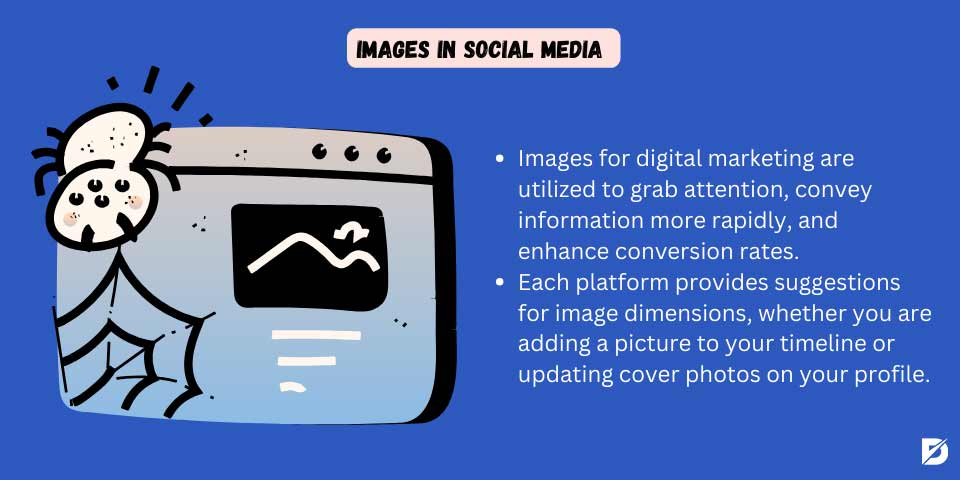
Images in Social Media
Social media is certainly the biggest influence in our lives. Therefore, images for digital marketing are used to capture attention, communicate faster, and increase conversions. Every network recommends picture dimensions, regardless of whether you are uploading an image to your timeline or changing the cover photographs on your account. It is critical to size images correctly for social media postings because the wrong sizes may block other images or make your content appear low-quality, which will turn off readers.
Images in Emails
Sending emails is a big part of our lives; everyone wants their email to be read and stick around with the content. To do that, a product image, fun GIFs, or branded images can be used. Thus, visual marketing can keep your readers engaged, informed, and interested in the purpose of your email.
Images in Blog Posts
Blog posts are basically text-oriented marketing efforts, but that does not mean that they will not benefit from images. Images may help you visualize your points, attract readers, and spice up long text by adding visuals to your content. Infographics, screenshots, and product images can all be included in blog posts. Any digital marketing image used as the blog post cover (the one that appears at the top of the post along with the post summary) must represent the point of the content.
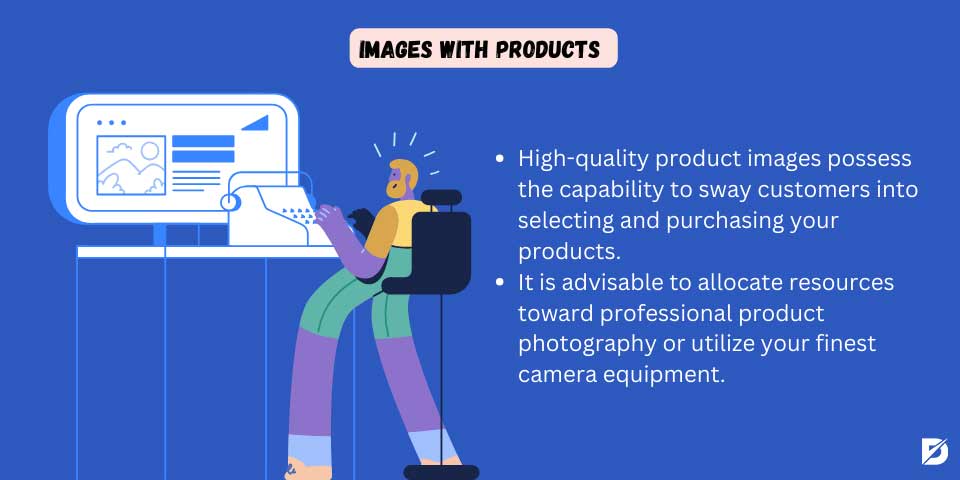
Images with Products
As previously mentioned, product images have the power to influence customers to choose and buy your products. You should invest in professional, high-quality product photography or make use of your best camera equipment. In case your product is digital, such as software, make sure to include a lot of images and animated GIFs to show them what the product will look like when they buy it.
Optimizing Images of Digital Marketing for SEO: Enhancing Visibility
If you are struggling with your website’s visibility and traffic, one of the most crucial ways is to optimize the images of digital marketing. It is not just about quality content or catchy headlines; it also involves giving some love and personality to your visual content. Since they should not only grab people’s attention but also attract search engines, digital marketing images should be optimized for SEO. You may wonder how image optimization impacts website visibility. Let’s have a look at that in the next chapter detail.
The Effects of Image Optimization on Website Visibility
To increase website visibility, bring in more organic visitors, and improve SEO ranks, image optimization is essential. It can directly affect user experience, search engine rankings, and overall website performance when applied properly. This is a detailed explanation of how image optimization affects the visibility of websites:
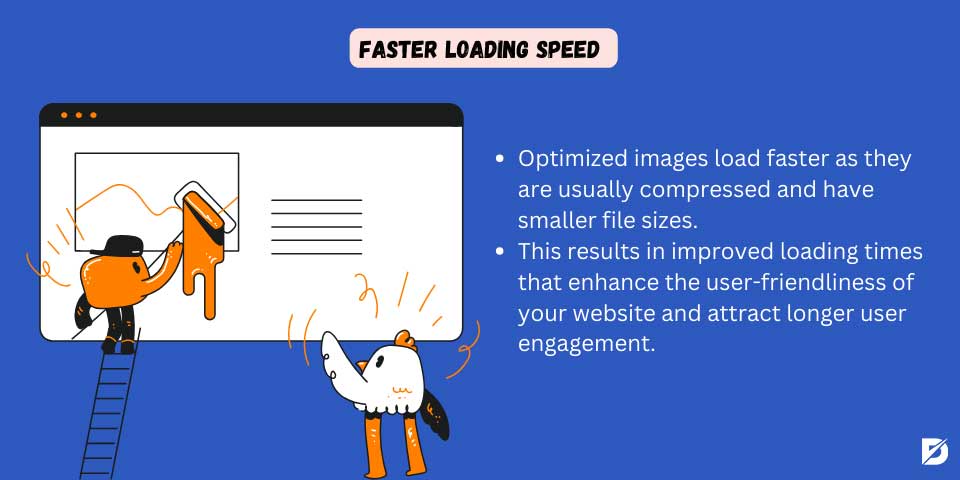
Faster Loading Speed
Optimized images load more quickly because they are typically compressed and have reduced file sizes. Quick loading times make your website more user-friendly and attract users to stay on it longer. Search engines like Google give websites that load quickly priority, and as a result, they are more visible in search engine results pages (SERPs).
Improved User Experience
High-quality and well-optimized images draw users in and make for a more enjoyable browsing experience. Images for digital marketing can trigger feelings, provide important information, and enhance the visual appeal and visual engagement of content. Positive user experiences encourage people to stay on your website longer, which lowers bounce rates and raises the possibility that site visitors will become buyers.
Improved SEO Ranking Factors
Image optimization plays an important role in some SEO ranking factors, which include the following:
- Structured Data: By using structured data markup for your images, you may give search engines more details about the images, like the author, subject, and copyright information. This improves the comprehension and classification of your content by search engines, increasing its visibility. You can use Dopinger’s structured data testing tool for free!
- Image Filenames: Your images’ discoverability in image searches and organic rankings can both be increased by giving them descriptive filenames.
- Alt Text and Title Tags: Search engines can understand what an image outlines if you provide relevant and descriptive alt texts for images. This increases the overall quality of your material and helps search engines appropriately classify your images. Learn how to write SEO-friendly alt text for your images.
In conclusion, using proper digital marketing images, alt text, and file names increases the ranking in search results, which leads to increased visibility and organic traffic.
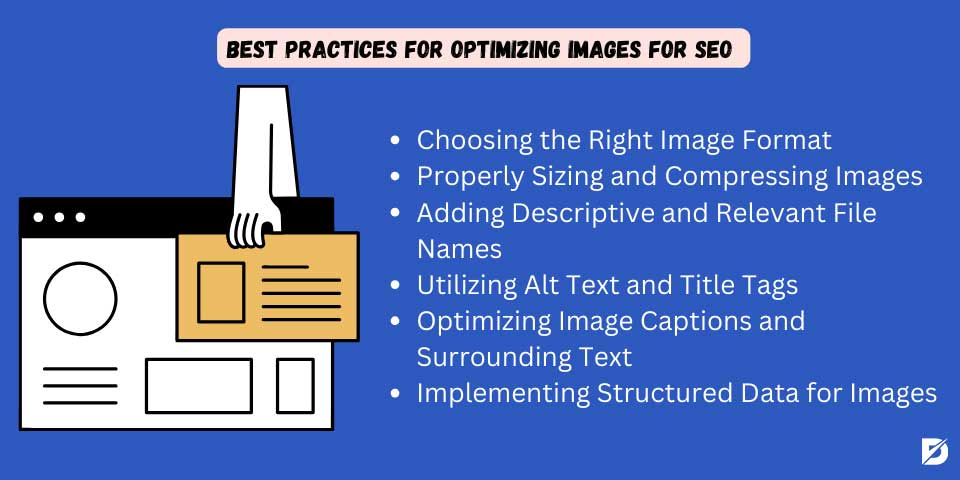
Best Practices for Optimizing Images for Digital Marketing for SEO
Let’s now examine some of the best practices for optimizing images. These practices will help you optimize images for SEO.
- Choosing the Right Image Format
- Properly Sizing and Compressing Images
- Adding Descriptive and Relevant File Names
- Utilizing Alt Text and Title Tags
- Optimizing Image Captions and Surrounding Text
- Implementing Structured Data for Images
Choosing the Right Image Format
There are some effective ways to choose the right image for digital marketing. Deciding on whether your image is a photograph, graphic, or illustration is important because different formats work better for each type. You can balance image quality and file size well by using JPEG format for images with complex colors. Using PNG is ideal if you use logos, icons, or infographics with transparency or solid backgrounds. You should try to avoid using BMP or TIFF formats because they result in large file sizes and may cause your website’s loading speed to slow down. You can ensure images are visually appealing by choosing the proper image format for your visual marketing.
Properly Sizing and Compressing Images
It is one of the crucial elements of optimizing images for SEO. You want to ensure that your images’ dimensions and file size are optimized. Here are some of the aspects:
- Sizing Images: You can use image editing tools or website platforms to resize images to the desired dimensions. Ensuring a balance between image quality and file size is important to get optimal loading times. You should also avoid uploading large images that may slow down your website’s speed.
- Compressing Images: You can reduce the sizes of your images without affecting image quality. Utilizing compression techniques or using image compression tools can be beneficial.
- Considering responsive design: Optimizing images for different devices(mobile phones, laptops) and screen sizes is important. This will ensure that your website will be visually appealing and functional.
Images of digital marketing should be properly sized and compressed to get improved SEO rankings. It improves user experience, lowers bounce rates, and raises the possibility that site visitors will remain on your page longer.

Adding Descriptive and Relevant File Names
Adding relevant and descriptive file names will help search engines understand the concept of your digital marketing images and improve the visibility of page results. There are some important points to consider when adding file names to the images.
- Using Descriptive Words: You should select file names that appropriately represent the content of the images. Instead of using generic terms like ‘IMG_005’, you should try to use specific terms related to the image, such as ‘digital_marketing_visuals.’
- Including Keywords: Include appropriate keywords in the names of your files. This makes linking the image to particular search terms easier for search engines. If you have a picture of a cloud in the sky, for example, you may use keywords like “sky-view.jpg.”
- Using Hyphens to Divide Words: This makes content easier to read for both users and search engines. For example, instead of using ‘digitalmarketingimages,’ you can use ‘digital-marketing-images.jpg.’
- Avoiding Excessive Numbers or Characters: Filenames should be brief and should not contain extra letters or numbers. To maintain simplicity and clarity, use terms that are relevant and expressive.
Utilizing Alt Text and Title Tags
These are important elements in optimizing digital marketing images for SEO. Alt text, also known as alternative text, describes the image that search engines can comprehend. It is critical to include alt text that appropriately captures the meaning and context of the image and is both descriptive and relevant. In order to give people who are blind or visually impaired an understandable explanation of the image, the alt text should be to the point. Enhancing the image’s visibility in search engine results can also be accomplished by including keywords in the alt text. Similar to this, title tags provide more details about an image when a user hovers over it. Title tags are useful for improving user experience and SEO, but alt text is necessary for accessibility. Learn more about optimizing images for SEO.
Title tags must be informative and indicate relevant details about the image, just like alt text. For optimal SEO impact and to prevent duplication, it is advised that each image have its own alt text and title tag. You may increase your website’s image accessibility and search engine visibility by appropriately utilizing alt text and title tags.
Optimizing Image Captions and Surrounding Text
It’s the process of making the text elements that go with your images of digital marketing better in order to increase their visibility and general SEO value. This covers the text that surrounds the image on the page as well as the caption that appears directly below it.
The surrounding text that appears with an image, in addition to subtitles, is important to improving image SEO. Making sure that the text surrounding the image is appropriate and worded naturally is crucial. You may increase the visibility and relevancy of your images even further by gently adding relevant keywords about the image and its subject matter into the surrounding text.
However, most importantly, you should avoid keyword stuffing or using misleading captions and focus on giving valuable information that is relevant to both the image and overall content. Doing so can ensure that images are effectively optimized for SEO.
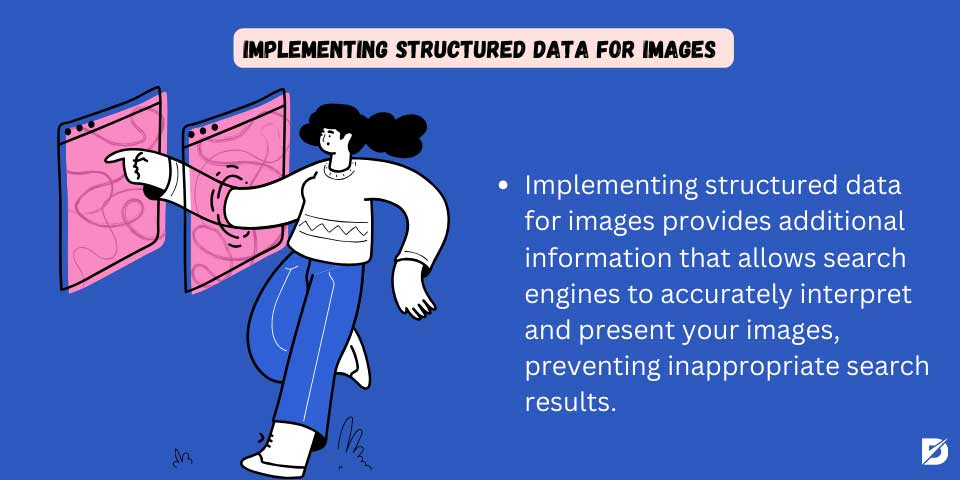
Implementing Structured Data for Images
A structured data implementation for images adds more information about the images in a way that search engines can comprehend. This makes it easier for search engines to understand and present your images with inappropriate search results. You can include information about the subject of the image, its location, the copyright, and more by supplying structured data. This boosts overall SEO success by increasing the likelihood that your website will show up in image-rich search results in addition to increasing the visibility of your images in search engines. Also, learn how to optimize title, description, and URL for SEO.
The Future of Digital Marketing Images
The 2020s are an innovative era in the field of digital marketing. Companies are using AI, augmented reality, and blockchain to adapt to a digitally driven future. And, new strategies are beginning to emerge in visual content.
Thanks to voice search, information may now be accessed hands-free, completely changing the digital world. Driven by developments in natural language processing and speech recognition, it first appeared in the 2010s. These days, it’s a common function found in devices like smart speakers and smartphones, providing speed and ease. Voice search is commonly utilized for various purposes and translates spoken language into text.
One of the methods for accessing digital information is classified as augmented reality (AR) and virtual reality (VR). These technologies enable three-dimensional, immersive experiences that bring content and data to life. Whereas VR provides immersive virtual experiences, AR allows real-time data and graphics to be placed into a real-life environment.
Visual Marketing: 2020’s New Era
Digital marketing images play an important role in so many ways, such as ranking high in search, getting shared on social media, keeping your visitors’ attention, and enhancing visibility. There are many types of visual marketing content, like images, animated images, videos, custom illustrations, GIFs, etc. That is why knowing where and how to use them is crucial. By optimizing images for SEO to enhance visibility and following trends in visual marketing, you can bring more organic visitors and improve your SEO ranks.
Conclusion
In today’s fast-paced digital world, utilizing eye-catching and engaging images in your marketing strategy is essential. From social media posts to email campaigns, images have the power to draw in potential customers and convey your message effectively. In this blog post, we have explored various examples of digital marketing images that can elevate your brand and drive results. We have seen how using high-quality, relevant, and branded visuals can significantly impact your audience’s perception of your brand. Additionally, we highlighted the importance of incorporating diversity and inclusivity in your visual content to connect with a wider range of audiences. As we conclude this blog post, take the time and effort to curate visually appealing images that align with your brand values and resonate with your target audience. Remember that visuals have the power to leave a lasting impression on consumers and can be a crucial factor in their decision-making process.
Frequently Asked Questions About
A clear and understandable subject, using natural light in images, avoiding complex information in the images, not over-editing, and keeping the content easy to understand are the ways to improve digital marketing images.
Images are important in marketing because they are digested faster. Readers process the content in less than 10 seconds when using an image. They also help keep the readers on the website more, making it memorable. The other benefit of using images is getting more views and ranking higher in search engines.
You should work hard on creating powerful visual content. Your brand will have visibility when you support your content with images and videos. You should measure the effectiveness of your marketing strategy via some tools. In addition, it may be useful to understand what strategies would work for you and not to worry about using all visual marketing assets.

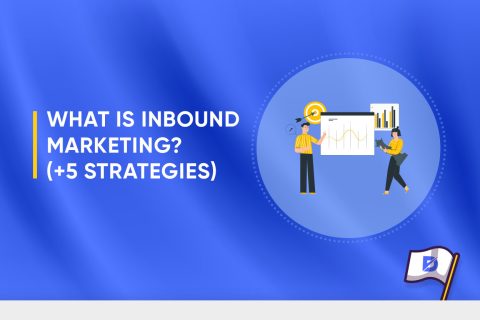


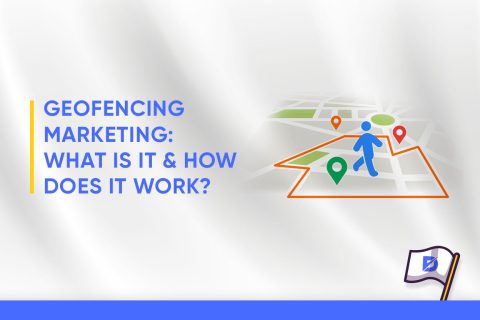
No comments to show.